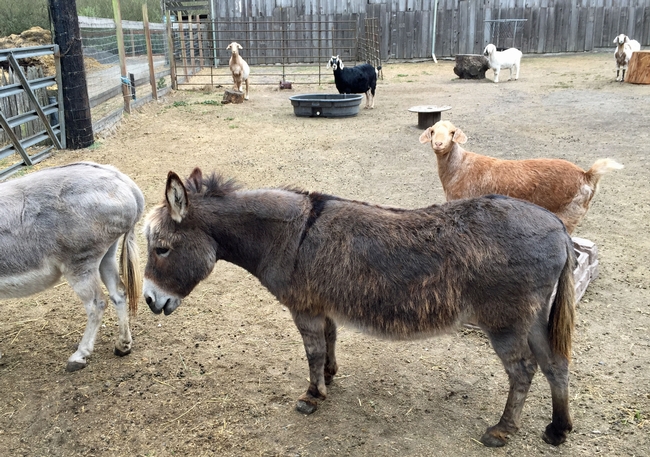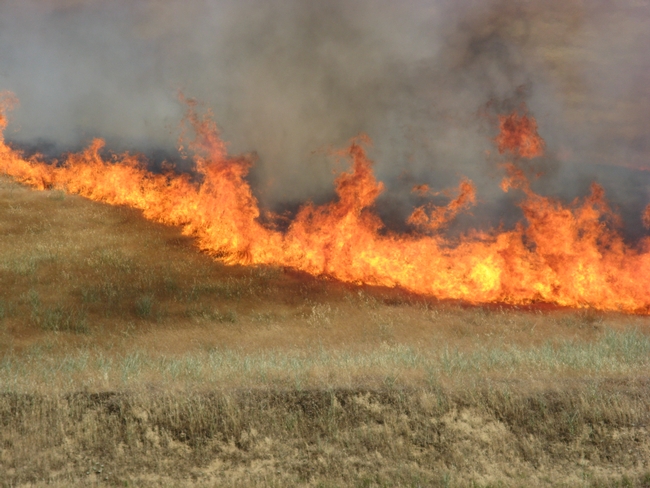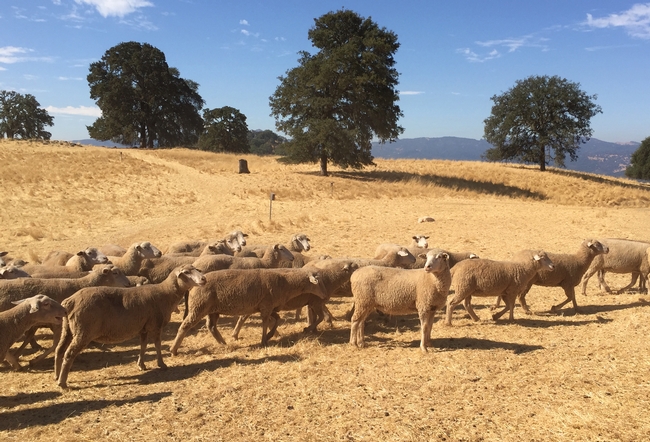Posts Tagged: Dairy
Livestock owners asked to weigh in on fire impact
Fire Impact and Risk Evaluation (FIRE) survey.
“We will aim to quantify the impact of wildfires in different livestock production systems,” said Beatriz Martínez López, director of the Center for Animal Disease Modeling and Surveillance in the UC Davis School of Veterinary Medicine. “The idea is also to create a risk map showing areas more likely to experience wildfires with high economic impact in California.
“This economic and risk assessment, to the best of our knowledge, has not been done and we hope to identify potential actions that ranchers can take to reduce or mitigate their losses if their property is hit by wildfire.”
Martínez López, who is also an associate professor in the Department of Medicine & Epidemiology at UC Davis, is teaming up with UC Cooperative Extension livestock and natural resources advisors and wildfire specialists around the state to conduct the study.
“Right now, we have no good estimate of the real cost of wildfire to livestock producers in California,” said Rebecca Ozeran, UC Cooperative Extension livestock and natural resources advisor for Fresno and Madera counties. “Existing UCCE forage loss worksheets cannot account for the many other ways that wildfire affects livestock farms and ranches. As such, we need producers' input to help us calculate the range of immediate and long-term costs of wildfire.”
Stephanie Larson, UC Cooperative Extension livestock and range management advisor for Sonoma and Marin counties, agreed, saying, “The more producers who participate, the more accurate and useful our results will be.”
“We hope the survey results will be used by producers across the state to prepare for wildfire,” said Matthew Shapero, UC Cooperative Extension livestock and natural resources advisor for Ventura and Santa Barbara counties, “And by federal and private agencies to better allocate funds for postfire programs available to livestock producers.”
The survey is online at http://bit.ly/FIREsurvey. It takes 15 to 30 minutes, depending on the number of properties the participant has that have been affected by wildfire.
“Survey answers are completely confidential and the results will be released only as summaries in which no individual's answers can be identified,” said Martínez López. “This survey will provide critical information to create the foundation for future fire economic assessments and management decisions.”
Selective dairy breeding could help prevent lameness, boost productivity
"Most dairy breeding programs select for milk production but the results of this study indicate that the cow's conformation, particularly in terms of hoof health, also should be considered," said Anita Oberbauer, professor and chair of the UC Davis Department of Animal Science and lead author of the study. The study is published in the October issue of the Journal of Dairy Science.
By reducing hoof-health problems through selective breeding, dairy producers could increase herd longevity, improve milk yield and reduce economic inputs and environmental impacts related to raising replacement heifers, the study concludes.
Oberbauer noted that lameness and hoof health are also animal welfare issues that can cause dairy producers to cull, or retire, cows early from their milking herds. As of 2011, an average of more than 40 percent of California dairy cows were culled annually, and lameness was one of the top three reasons for culling.
The 29-month study, conducted on three California dairies, correlated milk-production records with weekly observations of hoof health problems for more than 5,000 cows, including those that were visibly lame and those that were "dry," or finishing their milking cycle.
Recorded lameness-related hoof conditions included white line disease, sole ulcer, other claw horn lesions, foot rot and foot warts.
Foot warts were the most prevalent of the ailments, occurring in more than 17 percent of the monitored cows. The research also demonstrated a sizable genetic component to sole ulcer and foot warts, indicating that a breeding program directed at reducing hoof disease will likely lead to measurable improvements.
The study concluded that a breeding program that considers hoof-health traits would be unlikely to jeopardize the cows' milk productivity.
Oberbauer said that further study is now needed to identify the specific genes or DNA regions that are responsible for hoof-health traits.
UC Davis has helped to make California the nation's largest dairy state, contributing to better sanitation procedures, improvements in raw milk handling and quality, and innovations that have reduced the environmental impact of livestock waste. The J-5 vaccine alone, developed in 1988 by veterinary medicine faculty to prevent mastitis in dairy cattle, saves producers $11 million annually. Faculty research carried out at UC Davis also helped eradicate bluetongue virus in parts of the United States and rinderpest in much of Africa. Both diseases affect livestock.
Collaborating researchers on this study included Steven Berry, a Cooperative Extension dairy management specialist, staff researcher Janelle Belanger, alumna Rachel Goldrick and Professor Thomas Famula, all of the UC Davis Department of Animal Science; and Juan Manuel Pinos-Rodriguez of Instituto de Investigacion de Zonas Deserticas, Mexico.
The W.K. Kellogg Endowment and the University of California's Agriculture and Natural Resources division funded the study.





